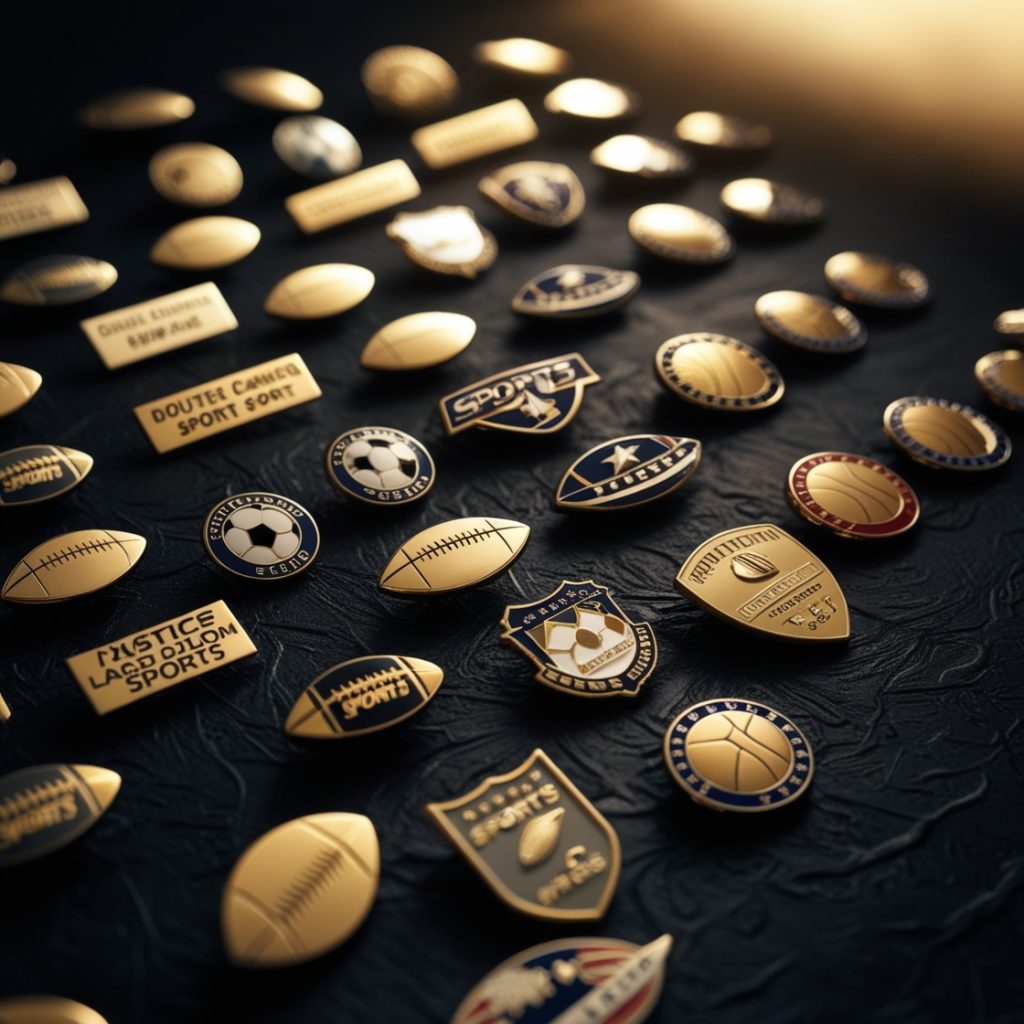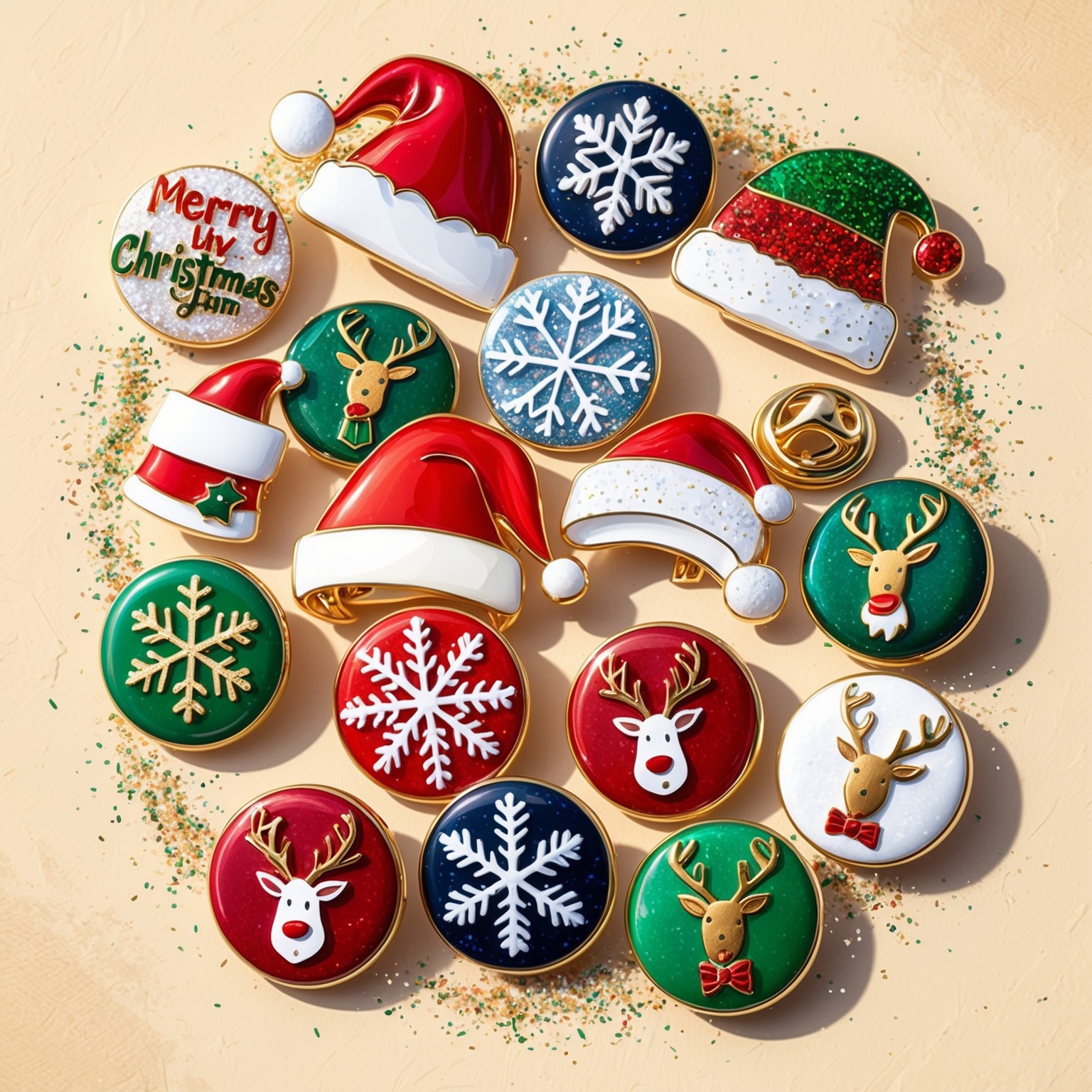Custom lapel pins have become a staple in sports culture, serving as symbols of pride, achievement, and team unity. Whether they’re worn by athletes, coaches, fans, or collectors, custom lapel pins embody the spirit of competition, celebrate milestones, and represent the rich history of the sports world. Over the years, the design and significance of these small yet powerful items have evolved, adapting to new trends, technological advancements, and the changing needs of teams and fans.
More than just decorative accessories, custom lapel pins are now seen as collectibles, tools of fan engagement, and a way to celebrate both individual and team achievements. The journey of these pins—starting from their utilitarian roots to their current position as prized memorabilia—offers an interesting reflection of how sports culture itself has evolved. For athletes, lapel pins represent important milestones, like winning championships or earning special accolades, while for fans, they serve as emblems of loyalty and connection to their favorite teams.
Beyond their aesthetic appeal, lapel pins are increasingly used as promotional tools for organizations, brands, and charitable causes. The design and crafting of these pins have transformed drastically, from simple metallic badges in the early 20th century to the elaborate, colorful, and highly personalized pieces seen today. They hold both symbolic and emotional weight, providing a tangible connection to significant sporting moments, tournaments, or personal triumphs.
In this article, we will trace the history of custom lapel pins in the sports industry, exploring their origins, how their design has evolved, and the significance they hold for teams, players, and fans alike. From their early use as simple badges of affiliation to their current status as collectible items and symbols of achievement, custom lapel pins have played a crucial role in shaping sports culture across the globe.
1. The Origins of Lapel Pins in Sports
The history of lapel pins dates back centuries, with their earliest use in the military, where they were often worn to signify rank, allegiance, or achievement. As they became more popular in the military and civic organizations, lapel pins slowly made their way into the world of sports.
A. Early Beginnings: Military Influence on Sports Pins
The concept of wearing small, emblematic pins to show affiliation or achievement is rooted in military traditions. Soldiers wore insignia pins as part of their uniforms to represent their rank, regiment, or accomplishments. These pins served as badges of honor and loyalty, signifying their commitment to the group they represented.
As sports teams began to emerge in the late 19th and early 20th centuries, the influence of military symbolism became apparent. Sports leagues adopted similar practices, creating custom lapel pins to identify players and coaches as part of a specific team or organization. These early pins were often simple metal badges featuring the team’s logo or name, worn on uniforms to distinguish members of different teams or clubs.
The influence of military lapel pins was particularly strong in sports such as baseball, which has long had ties to the American military. Early baseball teams, particularly during the first half of the 20th century, began using lapel pins to foster team identity and acknowledge significant achievements.
B. The First Use of Lapel Pins in Olympic Sports
The international sports scene saw the introduction of lapel pins in the early 20th century, particularly with the advent of the modern Olympic Games. Lapel pins were first introduced at the 1896 Athens Olympics, where athletes and officials wore small pins to represent their countries. These early custom lapel pins were simple in design but carried immense significance, symbolizing national pride and international competition.
As the Olympic Games evolved, so did the practice of trading lapel pins among athletes, officials, and spectators. By the 1920s, pin trading had become a popular tradition at the Olympics, with participants exchanging pins as a gesture of goodwill and friendship. This practice further cemented lapel pins as an integral part of sports culture, particularly in the context of international competition.
The tradition of Olympic pin trading continues to this day, with each Olympic Games producing a wide variety of custom lapel pins representing different countries, sports, and events. These pins have become highly collectible, with many fans and athletes dedicating themselves to building extensive collections.
2. Evolution of Design: From Simple Badges to Intricate Creations
The design of custom lapel pins has evolved significantly over the decades, from the simple metal badges of the early 20th century to the vibrant, intricately crafted pins we see today. Advancements in manufacturing techniques, the influence of popular culture, and changing aesthetics have all played a role in shaping the evolution of lapel pin design.
A. Early Designs: Simplicity and Functionality
In the early days of sports lapel pins, the focus was primarily on functionality. The pins were designed to be easily identifiable, featuring basic logos, team names, or national flags. These early pins were typically die-struck, with simple raised and recessed areas that highlighted the design. Enamel paint was sometimes added to provide color, but the overall design was often minimalist.
For example, early Olympic lapel pins featured simple imagery, such as the Olympic rings or a national flag, stamped onto metal. These pins were functional, serving primarily as a way to identify athletes or officials and to signify their participation in the event.
Similarly, early sports team pins were designed with practicality in mind. Baseball teams, for instance, used lapel pins with the team’s logo or mascot, often stamped onto brass or nickel. These pins were worn on uniforms, hats, or jackets to show team affiliation but were not intended as elaborate decorative pieces.
B. The Emergence of Soft and Hard Enamel Pins
As the popularity of lapel pins grew, so did the demand for more visually appealing designs. By the mid-20th century, custom lapel pins began to feature more colorful and detailed artwork, thanks to the introduction of soft and hard enamel techniques.
- Soft Enamel Pins: Soft enamel lapel pins became popular for their vibrant colors and raised metal edges, which created a textured, three-dimensional effect. These pins were made by filling recessed areas of the metal with enamel paint and then allowing it to dry, leaving the raised metal outlines exposed. This method allowed for more intricate designs and greater visual contrast.
- Hard Enamel Pins (Cloisonné): Hard enamel, or cloisonné, pins offered a more polished and refined look. In contrast to soft enamel pins, the enamel in hard enamel pins was polished down to be flush with the metal edges, creating a smooth, shiny finish. These pins became associated with prestige and were often used for commemorative events, such as championship victories or special anniversaries.
Both types of enamel pins allowed for greater creativity in design, enabling sports teams, leagues, and events to produce more visually striking and collectible pins. Teams began to experiment with different shapes, sizes, and finishes, resulting in a wider variety of custom lapel pins that were both functional and aesthetically pleasing.
C. The Influence of Popular Culture on Sports Pin Design
As sports became more intertwined with popular culture in the late 20th century, the design of custom lapel pins began to reflect broader cultural trends. For example, sports teams and organizations began incorporating elements of pop culture, such as comic book characters, mascots, and bold graphic designs, into their pins.
In the 1980s and 1990s, lapel pins became a key part of the fan experience. Major league sports teams, particularly in baseball, football, and basketball, produced custom lapel pins not only for players and staff but also for fans to collect. Limited-edition pins featuring team mascots, special game moments, or holiday-themed designs became highly sought-after by collectors, blurring the line between sports memorabilia and pop culture collectibles.
Today, custom lapel pins often incorporate references to cultural icons, music, or even social causes, reflecting the ways in which sports are influenced by the broader social and cultural landscape.
3. The Rise of Custom Lapel Pins as Collectibles
One of the most notable aspects of custom lapel pins is their enduring status as collectible items. In the world of sports, lapel pins have gone from being simple team identifiers to coveted collectibles with both emotional and monetary value. The rise of pin trading, limited-edition designs, and a strong collector’s market has made custom lapel pins an integral part of the sports memorabilia landscape.
A. Pin Trading at Major Sports Events
Pin trading has become a beloved tradition at many major sports events, particularly the Olympic Games, where athletes, officials, and fans exchange pins as a way to connect and share experiences. The tradition began in earnest at the 1924 Paris Olympics, when athletes and officials began trading pins with one another. Over the years, the practice spread to spectators, who sought to collect pins from different countries and sports.
Today, pin trading is a vibrant part of the Olympic experience, with entire marketplaces dedicated to the exchange and sale of custom lapel pins. Fans travel to the Games with extensive collections, eager to trade for rare or limited-edition pins. This tradition has extended beyond the Olympics to other major sporting events, such as the FIFA World Cup, the Super Bowl, and the World Series, where fans and collectors trade team and event-specific pins.
B. Limited-Edition and Commemorative Pins
The appeal of custom lapel pins is further enhanced by the production of limited-edition and commemorative pins, which are highly sought after by collectors. Sports teams and event organizers frequently create limited-edition pins to commemorate special occasions, such as championship wins, anniversaries, or notable events.
For example, a baseball team might produce a limited run of pins to celebrate a World Series victory, with each pin numbered to highlight its exclusivity. Fans who attend the championship game or participate in the team’s victory parade may receive these pins, making them rare and valuable keepsakes.
Commemorative pins are also produced for specific events, such as the opening of a new stadium or the retirement of a legendary player. These pins become prized possessions for collectors, representing key moments in sports history.
C. Pin Collecting and Its Role in Sports Culture
The hobby of pin collecting, known as “pin trading” in some circles, has become an integral part of sports culture. Fans, athletes, and collectors alike are drawn to the allure of building a collection that reflects their favorite teams, sports, and events. Pin collecting is not just about owning a piece of memorabilia—it’s about connecting with the sport, the team, and the community of fellow fans.
Many collectors spend years building their collections, seeking out rare pins from different decades, teams, and tournaments. These collections are often displayed in frames, albums, or shadow boxes, becoming personal museums of sports history. The emotional significance of these collections lies in the memories they represent—whether it’s attending a memorable game, meeting a favorite athlete, or celebrating a team’s victory.
Sports leagues and teams have recognized the value of pin collecting, often producing new designs each season to keep fans engaged. For example, Major League Baseball (MLB) teams frequently release new lapel pins at the start of each season, featuring different designs for opening day, special games, and playoff appearances.
4. Custom Lapel Pins in Modern Sports
In modern sports, custom lapel pins have expanded beyond their original roles as team identifiers and collectible items. Today, they serve a variety of purposes, from promoting social causes to enhancing fan engagement and even being used as tools for branding and sponsorship.
A. Lapel Pins as Tools for Fan Engagement
Fan engagement has become a critical component of modern sports marketing, and custom lapel pins play an important role in connecting teams with their fanbase. Sports teams frequently distribute lapel pins to fans during games, special events, or promotional campaigns as a way to deepen the fan experience.
For example, a basketball team might give out limited-edition lapel pins to the first 5,000 fans who attend a playoff game. These pins serve as souvenirs, commemorating the event and enhancing the fan’s emotional connection to the team. Some teams also offer “mystery pin” packs, where fans can purchase a package containing a random selection of pins, encouraging them to trade with other fans to complete their collection.
This strategy not only boosts fan engagement but also drives merchandise sales, as fans become eager to collect each new pin design.
B. Social and Charitable Causes Represented in Lapel Pins
In recent years, sports teams have used custom lapel pins to promote social and charitable causes, leveraging their visibility to raise awareness and funds. Many teams create pins that represent causes such as cancer awareness, mental health advocacy, or environmental sustainability, often donating a portion of the proceeds to related charities.
For example, during Breast Cancer Awareness Month, NFL teams may wear pink lapel pins to support breast cancer research. Fans can purchase these pins, with the proceeds benefiting breast cancer charities. This not only raises awareness but also strengthens the team’s relationship with its community and fans.
These cause-related pins have become an important aspect of sports culture, allowing fans to show their support for meaningful issues while also representing their favorite teams.
C. Lapel Pins as Branding and Sponsorship Tools
In addition to engaging fans and promoting causes, custom lapel pins are used as branding and sponsorship tools. Many sports teams create branded lapel pins that feature the logos of corporate sponsors or partners. These pins are often distributed at sponsored events or included in VIP packages, helping to build the sponsor’s association with the team and the sport.
For example, a sports team might create a custom lapel pin for a sponsored event, featuring both the team’s logo and the sponsor’s logo. These pins serve as promotional items that benefit both the team and the sponsor, as they increase brand visibility and create a lasting connection between the fans and the sponsor’s brand.
The Enduring Legacy of Custom Lapel Pins in Sports
From their origins as simple badges of affiliation to their current status as collectible symbols of achievement, custom lapel pins have played an enduring role in sports culture. Over the decades, these pins have evolved in design, significance, and usage, reflecting the changing landscape of sports and the broader cultural trends that influence it.
Today, custom lapel pins are much more than mere accessories. They are powerful symbols of pride, unity, and accomplishment. Whether they are worn by athletes to commemorate victories, traded by fans at major sporting events, or collected as mementos of a team’s legacy, lapel pins hold deep emotional and historical value.
As sports teams continue to innovate and find new ways to engage with their fans, custom lapel pins will remain a cherished part of the fan experience, representing the timeless connection between sports, achievement, and personal identity. From the local little league team to the world’s biggest sporting events, these small tokens will continue to celebrate the milestones, memories, and traditions that make sports such a beloved part of our culture.
If you are interested in ordering some high-quality lapel pins, feel free to call us at our Toll free number 1-877-513-4811 or fill out one of our FREE QUOTE FORMS.



